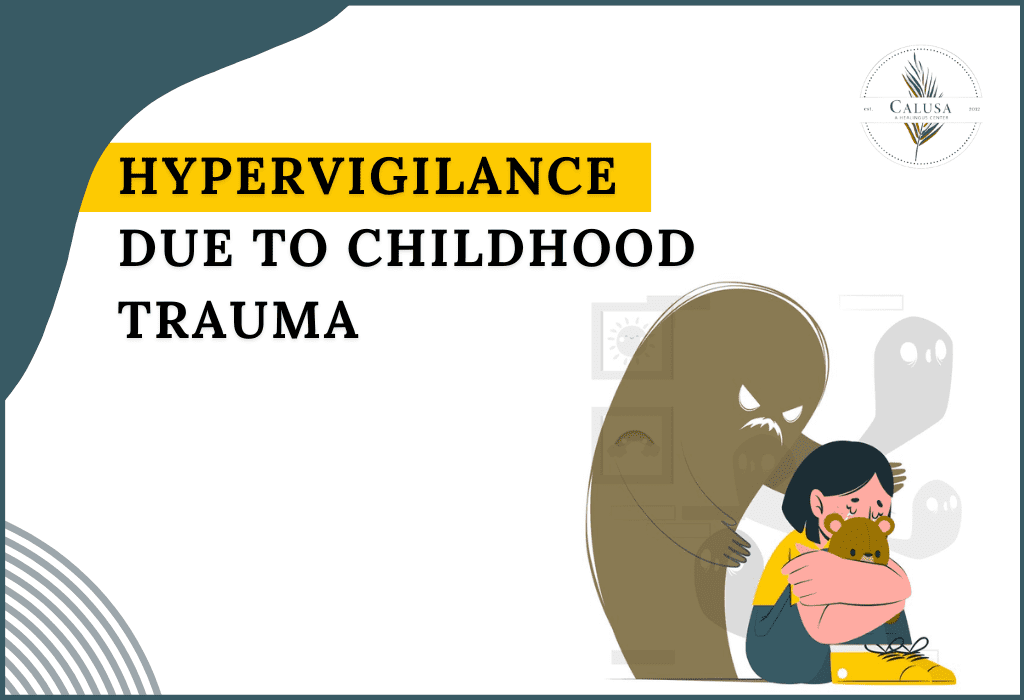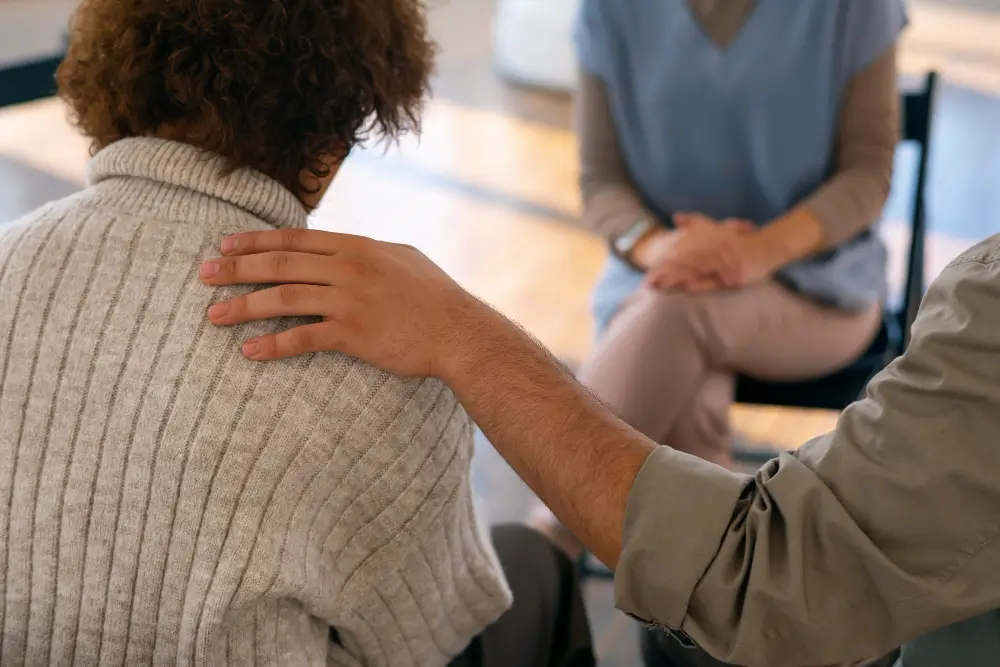Your heart races at the slightest noise. You flinch when someone gets too close. A simple conversation feels exhausting because you’re always scanning for danger. You’re not just being cautious; your brain has been wired to expect the worst. This is hypervigilance due to childhood trauma.
If this feels familiar, know this: it’s not your fault. When you experience trauma as a child, your brain learns to be on guard all the time. It was a survival mechanism back then, but now it’s affecting your peace, relationships, and daily life. The good news? Healing is possible. At Calusa Recovery, we understand what you’re going through and are here to help you regain a sense of safety.
Let’s talk about hypervigilance due to childhood trauma, why it happens, and how you can take steps toward healing.
What is Hypervigilance Due to Childhood Trauma?
Hypervigilance is an intense state of alertness where you constantly look for threats, even when none exist. It often develops in childhood as a response to trauma, teaching the brain that danger is always near. Exposure to childhood trauma is associated with a six-fold increased risk of developing Chronic Fatigue Syndrome (CFS) in adulthood. Even when you’re safe, your body and mind act as if you’re not.
Signs You May Be Experiencing Hypervigilance:
- Physical Reactions: Rapid heartbeat, sweating, muscle tension.
- Emotional Responses: Anxiety, irritability, feeling overwhelmed.
- Behavioral Patterns: Avoiding crowds, jumping at sudden noises, and feeling the need to control your surroundings.
Living in this constant state of alertness is exhausting, but with the right help, you can learn to feel safe again.
Why Does Childhood Trauma Cause Hypervigilance?
Childhood trauma changes how the brain develops, especially the areas that detect danger. If you grew up in an unpredictable, unsafe environment, your brain learned always to stay alert. Research suggests that approximately 25% of American children will experience at least one traumatic event by the age of 16. Now, even in safe situations, your nervous system reacts as if danger is still present.
Common Causes of Childhood Trauma:
- Abuse: Physical, emotional, or sexual abuse.
- Neglect: Lack of emotional or physical care.
- Loss or Separation: Losing a parent, foster care placement, or abandonment.
- Household Instability: Exposure to addiction, violence, or mental illness.
Your trauma was not your choice, but your healing can be.
How to Manage Hypervigilance Due to Childhood Trauma
At Calusa Recovery, we specialize in helping individuals regain control over their minds and bodies. Healing doesn’t happen overnight, but with the right approach, you can learn to feel safe again. Approximately 60% of adults report experiencing abuse or other difficult family circumstances during childhood.
1. Therapy and Counseling
Talking to a therapist can help rewire your brain’s response to stress and teach you healthier coping mechanisms.
- Cognitive Behavioral Therapy (CBT): Helps you challenge negative thought patterns and replace them with healthier ones.
- Eye Movement Desensitization and Reprocessing (EMDR): Reduces distress linked to traumatic memories through guided eye movements.
- Somatic Therapy: Focuses on releasing trauma stored in the body through movement and breathwork.
- Trauma-Focused Therapy: Provides specialized techniques to help individuals process and heal from deep-rooted trauma.
2. Mindfulness and Relaxation Techniques
Your nervous system needs to relearn what safety feels like. These techniques can help.
- Deep Breathing: Helps slow down your heart rate and relax your body.
- Meditation: Trains your brain to stay present instead of scanning for danger.
- Grounding Exercises: Uses physical sensations to bring you back to the present moment.
- Journaling: Writing down your thoughts and fears can help release pent-up emotions.
3. Lifestyle Changes for Healing
A balanced lifestyle can support emotional and mental healing.
- Regular Exercise: Helps regulate emotions and improve mood.
- Quality Sleep: Restores brain function and emotional stability.
- Healthy Diet: Supports brain health and reduces stress.
- Limiting Stimulants: Reducing caffeine and sugar intake can prevent heightened anxiety.
4. Medication (If Needed)
Sometimes, medication can be a helpful tool in managing hypervigilance due to childhood trauma.
- Antidepressants: Can help regulate mood and anxiety.
- Anti-Anxiety Medication: Can temporarily reduce feelings of panic and stress.
- Beta-Blockers: Can help manage physical symptoms like rapid heart rate.
Medication is not the only solution, but when combined with therapy, it can be an effective part of treatment.
5. Building a Support System
Healing doesn’t happen alone. Finding people who support you can make all the difference.
- Support Groups: Connect with others who understand what you’re going through.
- Trusted Friends and Family: Lean on people who make you feel safe.
- Professional Help: Work with specialists who can guide your recovery.
- Community Resources: Seeking help from local organizations can provide additional support.
Long-Term Strategies for Managing Hypervigilance
Healing is not a linear process, but over time, small changes add up. Here are a few ways to maintain progress:
- Therapy Maintenance: Continue therapy sessions as needed, even when you feel better.
- Self-Care Rituals: Create daily habits that promote relaxation and emotional stability.
- Healthy Boundaries: Learn to say no and protect your peace.
- Educating Yourself: Understanding trauma and its effects can empower you to heal.
There is Hope, and You Can Heal!
Hypervigilance due to childhood trauma may feel like a lifelong battle, but you don’t have to fight it alone. At Calusa Recovery, we believe in personalized care, evidence-based therapies, and creating a path to healing that works for you.
You deserve to feel safe again. If you’re ready to take the next step, reach out today. We’re here to help you heal—at your pace, in your way.
Final Thoughts: Healing from trauma is not about “getting over it.” It’s about learning how to live without fear controlling you. With the right support, peace is possible. Reach out to Calusa Recovery today, and let’s take the first step together.
Key Takeaways
- Hypervigilance due to childhood trauma keeps the brain on high alert, even in safe situations.
- Around 25% of children experience at least one traumatic event by age 16.
- Common signs include anxiety, overreacting to stress, and physical tension.
- Therapy (CBT, EMDR, somatic therapy) and lifestyle changes help retrain the nervous system.
- Support, mindfulness, and healthy habits aid long-term healing.
- Calusa Recovery offers personalized, evidence-based care to help you regain peace.
FAQs
Q: What childhood trauma causes hypervigilance?
A: Childhood trauma that causes hypervigilance includes physical, emotional, or sexual abuse, neglect, witnessing violence, or growing up in an unpredictable environment. These experiences make the brain stay in a constant state of alertness, making it hard to feel safe or relaxed.
Q: What are the triggers of hypervigilance?
A: Triggers of hypervigilance vary but often include loud noises, sudden movements, arguments, authority figures, certain smells, or environments similar to past trauma. These triggers activate the brain’s fight-or-flight response, making a person feel unsafe even when there’s no real danger.
Q: What does hypervigilance as a trauma response look like?
A: Hypervigilance as a trauma response looks like constantly scanning surroundings for threats, overreacting to small stressors, difficulty relaxing, sensitivity to noise or movement, and struggling with trust. It makes daily life overwhelming, causing exhaustion and difficulty in relationships.
Q: What are the symptoms of childhood humiliation trauma?
A: Symptoms of childhood humiliation trauma include deep-seated shame, low self-esteem, social anxiety, fear of judgment, avoidance of social situations, perfectionism, and difficulty expressing emotions. People may replay embarrassing moments in their minds and struggle with self-worth and confidence.










